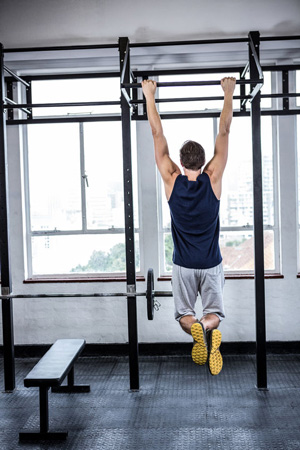If you’re new to the gym and you’re looking for a routine you can use to start building big muscles, then PPL might be just what the personal trainer ordered.
Often for gym-newbies, the big question they have to answer when starting out is whether to begin with a ‘full body routine’ (training their entire body every time they go to the gym) or a ‘split’ (focussing on one muscle group each workout and thereby ensuring it gets an intense workout followed by a week of rest). PPL offers something that’s just in-between, so read on and find out if this is what you’re looking for.
What Is PPL?
 The problem with using a full body routine when you’re trying to add muscle, is that it doesn’t stimulate the individual muscle groups enough in most cases to trigger any real growth. There’s only so much time you can spend at the gym, so if you need to train your arms, legs, back, pecs and abs, you’re only going to manage to do one or two exercise for each. Often that just doesn’t provide the stimulation necessary to trigger growth.
The problem with using a full body routine when you’re trying to add muscle, is that it doesn’t stimulate the individual muscle groups enough in most cases to trigger any real growth. There’s only so much time you can spend at the gym, so if you need to train your arms, legs, back, pecs and abs, you’re only going to manage to do one or two exercise for each. Often that just doesn’t provide the stimulation necessary to trigger growth.
Split routines solve this problem by letting you focus entirely on one muscle group like the biceps and break them down ready to be built back up. You won’t hit biceps again for another week either, which means you have all that time for them to recover and to grow in size and strength. The problem for beginners though, is that working one muscle group that intensively can often cause injury when they’re just starting out. And at the same time, it doesn’t trigger the release of growth hormone to the same extent as working multiple areas.
PPL stands for ‘Push, Pull, Legs’ and instead of focussing on just one muscle group, you instead group your muscles into three groups and focus on one each session.
The first group, push, includes any muscle you might use for pushing. That means your pecs, your triceps and your shoulders.
The second group, pull, includes any muscle you might use for pulling such as the biceps, the lats and the traps.
And on the third day? We do legs.
Now, you might have noticed that abs are conspicuously absent from this list. To be fair, your abs get some work during every kind of exercise but if you want to focus some time on them too, you can take them onto the end of any one of the workouts or even all three.
Why it Works
This works brilliantly because it means you can dedicate a lot more time to each of the muscle groups while at the same time still training more of your body in each workout. If you’re just hitting your biceps, lats and traps then you can do at least 3 or 4 bicep exercises and the same for lats (your traps really only need a few shrugs, if that). This is now more than enough time to really stimulate each muscle group and trigger growth.
Better yet though, is that grouping the muscles in this way specifically, means that you’re actually using the same muscles for the entire workout.
During most exercises you see, you have your ‘prime movers’ and ‘secondary movers’. The prime mover is the muscle group that you’ll be using predominantly to complete the move. The secondary mover meanwhile is like your ‘backup muscle’ which helps by stabilizing you and lending a helping hand.
When you perform pull ups for example, your prime movers are the lats and the secondary movers are the biceps. So if you’ve just spent the last four exercises performing variations of bicep curls, you’re now going to really feel it in your arms when you start performing pull ups. Muscle groups that push and muscle groups that pull tend to be involved in the same movements and so this is the perfect way to group them together.
On top of that is the fact that this routine is incredibly simple (which is always a big positive) and can be performed either once or twice a week.
If you’re worried a full body routine won’t get you to grow fast enough but you’re not ready for a full training split yet, try PPL!



